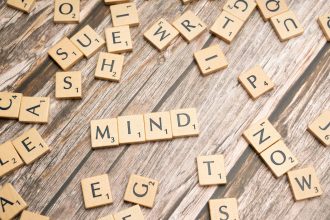A brain injury changes more than memory, balance, or movement — it reshapes emotions, relationships, and identity. Survivors often describe feeling like a different person after their injury, while families must adjust to new responsibilities and uncertain futures. Coping with these changes is one of the hardest parts of recovery.
Mental health is central to the healing process. Rehabilitation focuses on restoring function, but resilience comes from emotional strength, supportive relationships, and strategies that help both survivors and caregivers adjust to a new reality.
The Emotional Impact
The emotional effects of a brain injury are as real as the physical ones. Many survivors experience depression, anxiety, or mood swings. Some feel frustrated at how easily fatigue derails their plans, while others withdraw from social life because they struggle to keep up in conversations. Changes in personality, sometimes caused by injury to the brain’s frontal lobes, can create tension within families.
Caregivers are also deeply affected. The sudden shift into a role of constant support often brings exhaustion, guilt, or grief for the life that was lost. Recognizing these feelings — rather than suppressing them — is the first step toward healthy coping.
Practical Strategies for Daily Coping
Survivors find that structure and predictability help reduce stress. Creating consistent routines, setting manageable goals, and allowing time for rest between activities can make daily life feel less overwhelming. Journaling, calendars, or phone reminders can compensate for memory gaps. Creative outlets such as music, art, or writing provide expression when words fall short.
Physical activity, adapted to the individual’s abilities, is also beneficial. Gentle walking, stretching, or supervised exercise improves mood and reduces anxiety. Over time, even small victories—like preparing a meal or completing a therapy exercise — become important milestones that restore confidence.
Professional Support for Mental Health
Counseling and therapy are invaluable for addressing depression, anxiety, or emotional instability. Cognitive-behavioral therapy, for example, teaches practical techniques for challenging negative thoughts and replacing them with healthier perspectives. Group therapy and peer support reduce isolation by connecting survivors with others who share similar struggles.
Medication may also be part of treatment. Antidepressants, anti-anxiety medicines, or mood stabilizers can improve emotional balance, particularly when combined with psychotherapy. Neuropsychologists, who specialize in the connection between brain injury and behavior, provide both testing and treatment tailored to the unique changes survivors face.
Mind-Body Approaches
Many survivors find relief through practices that combine physical and mental well-being. Mindfulness meditation can improve focus and emotional regulation. Adaptive yoga or tai chi blends gentle movement with stress reduction. Breathing exercises help calm the nervous system during moments of overwhelm. Music and art therapy give survivors new ways to express themselves and connect with others.
While these approaches should complement, not replace, medical care, they can make recovery feel more holistic and empowering.
Coping for Caregivers
Caregivers face a double challenge: supporting their loved one while protecting their own health. Burnout is common, especially when there is little respite or community support. Accessing caregiver support groups, scheduling regular breaks, and seeking counseling when needed are all essential forms of self-care.
Respite services and community programs can provide temporary relief, while training programs teach caregivers safe ways to assist with mobility or communication. Recognizing their own limits is not selfish — it is an important part of sustaining the ability to provide long-term care.
The Long-Term Journey
Coping is not a single event but an ongoing process. Mental health may improve as survivors adapt, but setbacks are normal. Some people face post-traumatic stress, while others struggle with adjustment disorders years after the initial injury. Long-term mental health support, both for survivors and families, ensures that emotional healing continues alongside physical recovery.
Conclusion
Coping with a brain injury requires resilience, compassion, and the right support. Survivors benefit from routines, emotional outlets, therapy, and gradual progress toward independence. Families and caregivers need resources, respite, and reassurance that they are not alone in their struggles.
Mental health is not a secondary issue — it is central to recovery. With professional guidance, supportive relationships, and personal coping strategies, life after brain injury can be rebuilt with strength and meaning.







